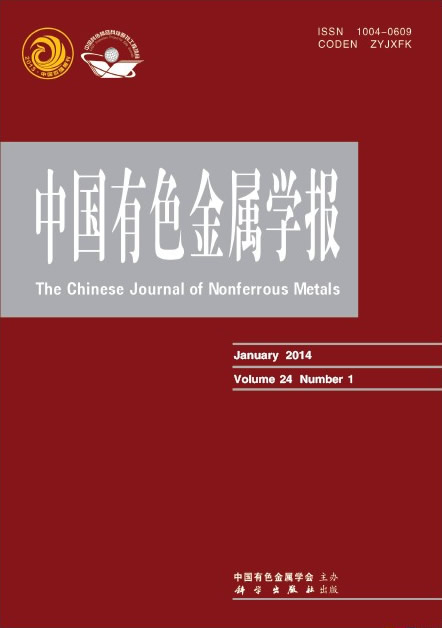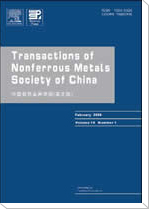(1. 青海大学 青海省高性能轻金属合金及深加工国家地方联合工程研究中心,西宁 810016; 2. 青海大学 青海省新型轻合金重点实验室,西宁 810016)
摘 要: 通过纯Co及代表性的Co基合金GH5188和GH6159在520 ℃熔融NaCl-52%MgCl2(摩尔分数)中的腐蚀行为研究,揭示Co基合金在熔融氯化盐中的腐蚀机理。结果表明:3种试样的腐蚀动力学曲线近似满足线性规律。腐蚀20 h后的扫描电镜分析表明,纯Co试样表面形成了壳层结构;EDS及XRD分析表明,壳层成分主要为MgO,这在一定程度上起到了减缓腐蚀的作用。GH6159表面也出现类似壳层结构,GH5188表面有孔洞出现;腐蚀160 h后,GH5188表面出现大量互相连通的腐蚀孔洞。横截面EDS分析表明,Co和Cr的含量均明显降低。因此,Co基合金的腐蚀机理主要源于合金元素Cr 、Fe和Co等的氧化、溶解和挥发。
关键字: 熔融盐;腐蚀;Co基合金;NaCl-52%MgCl2
(1. Qinghai Provincial Engineering Research Center of High Performance Light Metal Alloys and Forming, Qinghai University, Xining 810016, China; 2. Qinghai Provincial Key Laboratory of New Light Alloys, Qinghai University, Xining 810016, China)
Abstract:In order to explore the corrosion mechanism, the corrosion behaviour of two common Co-based alloys GH5188 and GH6159 immersed in high temperature NaCl-52%MgCl2 (mole fraction) molten salt for 160 h was measured. The results show that the corrosion kinetics curves are approximately linear. After being corroded for 20 h, there is a shell emerging on the surface of pure Co as well as GH6159 samples, which slows down the corrosion rate to some extent. Meanwhile, a lot of pores form on the surface of GH5188. And after being corroded for 160 h, these pores grow up and link together. The cross-section EDS analysis of GH5188 shows a decrease of Cr and Co content in the corrosion layer. Therefore, the mechanism of Co-based alloys is oxidation and dissolution of Cr, Fe and Co followed by volatilization of metal chloride.
Key words: molten salt; corrosion; Co-based alloy; NaCl-52%MgCl2


